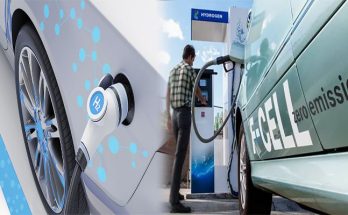As the global automotive industry continues its transition towards sustainable transportation, the adoption and market penetration of electric cars vary significantly across different regions. While some areas have embraced electric vehicles (EVs) wholeheartedly, others struggle to overcome barriers to entry such as infrastructure limitations, consumer preferences, and government policies. Understanding the regional disparities in electric car adoption is essential for addressing these challenges and accelerating the shift towards a more sustainable mobility ecosystem.
Factors Influencing Regional Disparities
Infrastructure Development
One of the primary factors influencing regional disparities in electric car adoption is the availability of charging infrastructure. Regions with a well-established network of charging stations and supportive infrastructure policies tend to experience higher adoption rates of electric vehicles. Conversely, areas where charging infrastructure is limited or inaccessible face significant barriers to entry, leading to lower market penetration of EVs.
Government Incentives and Policies
Government incentives and policies play a pivotal role in shaping the market for electric cars. Regions with robust incentives, such as tax credits, rebates, and subsidies for electric vehicle purchases, tend to see greater adoption rates. In contrast, regions with limited or inconsistent support from local governments may struggle to drive consumer interest in electric vehicles, ultimately hindering market penetration.
Consumer Awareness and Preferences
Consumer awareness and preferences also contribute to regional disparities in electric car adoption. Areas with a strong culture of environmental consciousness and a desire for sustainable living often exhibit higher demand for electric vehicles. On the other hand, regions where consumers prioritize traditional gas-powered vehicles and exhibit skepticism towards electric cars may experience slower adoption rates.
Economic Factors
Economic disparities among regions can significantly impact the affordability and accessibility of electric vehicles. Higher-income regions may see faster adoption of electric cars due to greater purchasing power and willingness to invest in sustainable transportation. Conversely, lower-income areas may face challenges in affording electric vehicles, particularly if government incentives and financial support are limited.
Addressing Regional Disparities
Infrastructure Investment
To bridge the gap in electric car adoption between regions, targeted investment in charging infrastructure is crucial. Governments and private enterprises can work collaboratively to expand the network of charging stations, particularly in underserved areas, to improve accessibility and encourage EV adoption.
Tailored Incentives and Policies
Customizing government incentives and policies to address the specific needs of different regions can help drive electric car adoption. Flexibility in offering rebates, tax credits, and infrastructure support based on regional priorities and challenges can level the playing field and stimulate market penetration of electric vehicles in underserved areas.
Public Awareness Campaigns
Educational initiatives and public awareness campaigns can play a significant role in changing consumer perceptions and driving interest in electric cars. By highlighting the benefits of EVs and dispelling common misconceptions, regions with lower adoption rates can work towards shifting consumer preferences towards sustainable transportation options.
Financial Inclusion
Promoting financial inclusion through innovative financing solutions and support programs can make electric cars more accessible to a wider range of consumers, particularly in regions with economic disparities. Initiatives such as low-interest loans, vehicle exchange programs, and leasing options can help lower the barrier to entry for EV adoption.
Regional disparities in electric car adoption and market penetration highlight the complex challenges faced in transitioning towards sustainable transportation. By addressing factors such as infrastructure development, government incentives, consumer awareness, and economic disparities, regions can work towards leveling the playing field and creating an environment conducive to the widespread adoption of electric vehicles. Through targeted investments, tailored policies, public awareness campaigns, and financial inclusion, the automotive industry can strive to bridge regional gaps and accelerate the global transition to a cleaner, smarter, and more sustainable mobility ecosystem.





